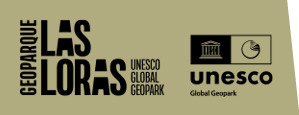NATURAL MONUMENT OF COVALAGUA
Covalagua rises from the surrounding landscape as a circular contour flat-topped inselberg delimited by high slopes and rocky abrupt gradients. Erosion, driven by the action of the water on the limestone rock, transformed the core of an old syncline (located therefore at the bottom of a valley) into the most prominent and outstanding relief at the region today.
Covalagua Nature Reserve is mainly distinguished by its geomorphology and the peculiarities of its hydrology. Its geological substratum is formed by a large outcrop of Cretaceous limestone from the Second Era, around 140 and 65 millions of years ago. These limestone rocks are highly karstified, that is to say eroded on the surface in the shape of karrens and dolines and excavated in its bowels by abysses and galleries, opened by the action of the rain and runoff waters. This is how the cavities which make Covalagua famous were originated.
- The Cueva de los Franceses Cave located at the underground of the Lora of Valdivia moorland. Its large rooms surrounded by stalactites, stalagmites, wells and unforeseen shapes on the rock, originated drop by drop throughout thousands of years, are well worth a visit.
- Covalagua Cave classified as Natural Monument and where another singularity of this nature reserve is revealed: lower layers of completely impermeable clay and marl, preventing the infiltrated water from going deeper beyond the limit of the limestone and making it sprouting outside in the shape of an extremely beautiful waterfall. The water, saturated with dissolved salt as a result of its expedition throughout the Karst, deposits part of its load giving place to an impressive formation of Calcareous tuffs.
On this geological heart, vegetation coats the perimeter slopes with brooms (Genista occidentalis) and covers the moorland plateau with thyme and meadows. Woods only grow in the valleys and on the northern slopes, filling them with Pyrenean and Lusitanian oaks in southern areas and a magnificent beech wood on the hillside over Valderredible, facing the Cantabrian Sea. A very original wooded area of great environmental value can be found here, in the beech wood there are also yew and holly trees, as well as Pyrenean and Lusitanian oaks.
In terms of fauna, there are large amounts of foxes and wild ungulates (deer, roe deer and wild boar), which the wolf preys on. Birds of prey are nevertheless the most outstanding element of the area. The moorland is flown over by golden eagles, vultures, Egyptian vultures, kites and harriers, which nest on the rocky gradients, in the forest or, as in the case of harriers, directly on the ground sheltered by thick shrubs.
LEARNING ABOUT /DISCOVERINGCOVALAGUA
You can enjoy the natural values of Covalagua by using the network of trails which start at this point. The track starting at this car park leads firstly to Covalagua waterfall, from where you can have a wonderful panoramic sight of the valley. The path is then split in two and you can go down along the edge of Ibia or Covalagua River to Revilla de Pomar or go up to the plateau where many options can be taken:
- On the left, Matacueva trail drives you to a viewpoint over Covalagua upwelling.
- The trail on your right takes you to Cueva de los Franceses Cave and its Visitors Centre, which can be visited all throughout the year, except for January and February for conservation reasons.
- If you decide to go straight on, you will find the northern edge of the moorland, where the gradient over the surrounding area is sharper and the sight over Valderredible, in Cantabria, is extraordinary. You can find Valcabado or Toro viewpoint, which sticks out steeply from the silhouette of the slope, highlighting the perspective over the beech wood covering the hill.
Along this route we will see stone huts (locally called “casitos”) that provided shelter to shepherds taking care of their flocks at the moorland, and big milestones along the itinerary leading to other two points of unquestionable cultural and ethnographical interest:
- Canto Hito menhir, a three meters high slab indicating a 3,000 to 6,000 years Neolithic burial site.
- The Well of the Wolves, an old trap used by the Lora de Valdivia inhabitants to hunt wolves, thus avoiding possible attacks to their herds.
